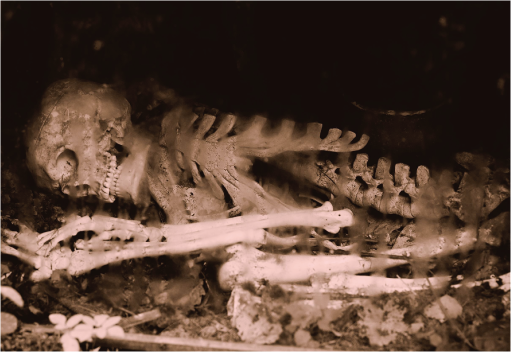2.2 Forensic scientists
Professionals who work in this field are known as forensic scientists or ‘archaeologists of the recent past’. Forensic scientists work in hospitals, police departments, laboratories, universities, morgues and corporate organisations.
The profession has gained huge popularity all over the world mainly due to TV drama series (such as CSI and Silent Witness) and forensic documentaries, but progress in forensic science has not been uniform throughout the world.
The different specialisms of forensic science include:
Forensic Pathology – the study of problems relating to unnatural death and various types of trauma to the living. It is a specialty of medicine and a sub-speciality of pathology.
Forensic DNA – the use of biological science to identify individuals by their DNA profile, using genetic samples such as blood, semen and saliva. The concept was first designed by Sir Alec Jeffreys at the University of Leicester in 1985.
Forensic Engineering – the investigation of accidents involving vehicle, aircraft, fire, electrical or metal fatigue by applying engineering principles to solve how they were caused.
Digital Forensics – digital forensics is the area of forensics in which professionals analyse and gather data from a computer or other form of digital media.
Forensic Accounting – to trace any financial inconsistencies within a company’s account.
Forensic Dentistry – the use of information through examination of teeth and dental prostheses to assist in identifying human remains and evaluating bite marks.
Forensic Anthropology – the study of human beings in relation to their physical character. The specialist answers questions on gender, age, ethnicity, stature, nutritional status, existence of disease processes, and the presence and character of skeletal trauma.
Early pioneers of forensic anthropology included Thomas Dwight, whose book The Identification of the Human Skeleton: A Medico-Legal Study (1878) was used successfully in a court case in 1897.
Forensic Toxicology – the detection, identification and quantification of drugs, other poisons or toxins in body tissues and fluid, including blood.
Activity 3
Using search engines or other resources, name two other areas of forensic science and write a short paragraph describing each.
If you would like to know more about some of the other forensic science disciplines, the book Crime Scene to Court [Tip: hold Ctrl and click a link to open it in a new tab. (Hide tip)] (White, 2016) provides a good overview of many of them.
Activity 4
Write your thoughts on one or more of the following topics. You don’t have to spend much (if any) time performing research to answer the questions.
- a.How do you think fictional crime dramas have affected the public perception of forensic science? How do you think they have affected criminals? Which dramas do you think give the most accurate and least accurate portrayals of forensic scientists?
- b.Why do you think an electrician who helps to determine the source of a fire is not a forensic scientist? Why is education alone not sufficient for one to become a forensic scientist?
Discussion
a. Crime dramas tend to oversimplify forensic science, which is often necessary to move a plot along. Results that may take days or weeks take hours because it would be boring to watch a protagonist twiddle their thumbs or get on with other jobs while they wait for results to come back. Digital forensics tends solve impossible tasks in crime dramas or give the impression that a digital forensics expert can (or would!) hack into any system. Criminals are certainly more forensically aware and will know to avoid leaving DNA or wiping or destroying digital devices that may contain evidence. Almost all the dramas we have seen take great liberties with the speed at which digital forensics, or triage, can be carried out, although the recent series Mr Robot has some of the most accurate portrayals of forensics and security tools.
b. While an electrician may find that poorly insulated electrical cables allowed arcing to cause a fire, she may not be trained to look for tool marks on cabinets, which might indicate tampering. She may not have studied examples of arson committed by consumer unit tampering or recognise residue from an explosive device or firearm, and will not have been independently examined in the practical and legal frameworks surrounding an investigation. A forensics scientist needs both education and experience to deal with the unique characteristics that each crime scene presents. Life rarely matches textbook situations.








